Visionary painter Brigid Marlin interviewed by Natalie Dekel.
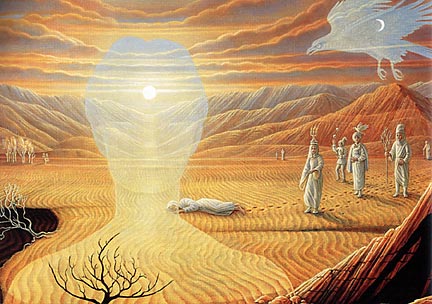
Brigid Marlin - 'Meditation on Emptiness', Oil and Tempera Painting, The Mische Technique, 28” x 32”, 1995. Collection of Mauro Albarelli.
Natalie Dekel: I understand that life has not been easy for you. Perhaps your painting has been akin to personal salvation or healing. Is that how you see it?
Brigid: No. The situation is that the spiritual journey comes first. Suffering causes one to search for a deeper meaning in life, when this is found and one sets out on a spiritual path, one begins to see more clearly, and various truths begin to reveal themselves.
Only then does the wish to record the new truth arrive. So painting is a by-product, not the cause of healing.
Do you review your views on life and the truths you have discovered as you paint?
This is making the process too cerebral- as if painting came from the head, which it certainly does not! It is rather as if the whole of one’s life up to the moment of painting has made one – the person that takes up the brush– so one’s blood and guts and bones go into the painting, and the head has nothing to contribute until the painting is finished. Then the head as critic can come in and perhaps suggest a few alterations.
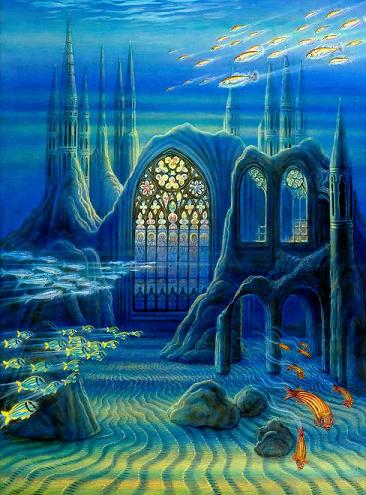
Brigid Marlin - ‘The Drowned Cathedral’, Oil and Tempera Painting, The Mische Technique, 28” x 36”, 2006.
Most of your paintings portray visions and have otherworldly quality to them. Can I ask how do you envision these images? Do you create your paintings in your mind by going into some place in yourself or maybe they ‘arrive unexpectedly’ to you from outside of yourself?
My work rarely comes from any premeditation. The image arrives and is connected to the idea of light. Even the technique I paint with, which applies white tempera to red panels, is like painting with light.
Very rarely the images come from outside. However, the usual process is that something happens to me that affect me deeply. After awhile, it gets clothed in images and surfaces as a painting.
Do you wait for a particular strong emotion to overcome you and urge you to create or can any emotion do, a bit like using painting as an emotional self expression?
No, the emotion must be dealt with and resolved internally before it can become art. It is said that Art comes from ‘Emotion recollected in Tranquillity.’ For example, a few years ago my Mother died. I could not paint for about a year, and then I painted a desert scene, with a woman walking across the desert to a ruined Cathedral. The door of the Cathedral was gaping open to reveal a total blackness. I think this meant that in spite of one’s belief in God or a religion, there is an ultimate mystery about death which none of us can penetrate. After some time, however one can contemplate this and accept it.
It is not that emotion is intense peak experience and tranquillity is balance void of intensity, rather that they are two sides of the same experience- like breathing in and breathing out.
How does Mische Technique help you to see or record things differently?
The technique I use is done in layers, which gives one a chance to ponder over what one has put down, and the interaction with the work allows one possibilities of deep instinctive and emotional reflection as one works.
[To learn more about the Mische Technique, please click here]
Locations, or places, seem a recurring element in your paintings. Do you feel your paintings relate to the place you live in (the UK) and the environment, or perhaps they are more concerned with landscapes of your emotions and inner world?
The two things can coexist. As I said earlier, paintings are triggered off by emotional experiences, therefore where I am when the experience takes place can affect the image as well.
Do the colours you paint with have personal significance?
Every artist has a personal palette. My Mother, the professional artist, Hilda van Stockum, was very fond of earth colours. This was because she was a very earthy person. My head is often in the clouds, so I tend to use rainbow colours.
How would you describe the link between your painting and your identity?
When I was very small I used to collect bits of broken glass. Some had little rainbows reflected in them. It distressed me that the rainbow was not always visible. I longed to preserve this rainbow, just as I longed to preserve moments in time. Painting was a way to capture the moment and keep it for all time.
Your paintings are a bit like alchemy turning moments/fractures of time into infinity. They also seem to have a spiritual side to them. Do you think people who look at your work would feel or perceive this ‘cleansing’ and kind of blessing quality of ‘preserved rainbows’?
I have had some strange experiences. After my son was diagnosed as schizophrenic I nearly had a nervous breakdown. After some time I fought my way back to mental health. After that I did a painting called: Magdalene. Two women saw it at the show and each came separately to see me to tell me that they had been recovering from a nervous breakdown and the painting had helped them!
Wow that is incredible! I always felt that painting communicates on several levels at once much beyond the normal communication of which we are aware.
So what do you think you have embodied in this painting that has been channelled to these women and for them to experience similar feelings to you?
In a mysterious way a painting speaks from gut-level to gut- level. It is not like reading a book where the communication leaps from mind to mind, but it speaks from one’s own unconscious to the other’s unconscious.
Many artists describe a sense of relief once a painting is completed. Do you share this feeling, or is painting simply another aspect of what motivates you to keep going as an artist?
It’s like giving birth. A big relief when the work is finished! In the case of a big painting, it may take awhile before the next idea arrives!
11 Dec 2010.
Images © Brigid Marlin. Text © Brigid Marlin and Natalie Dekel. Interview conducted via email correspondence March-May 2010. Brigid is based in London, UK. Natalie is based in Southampton, UK.

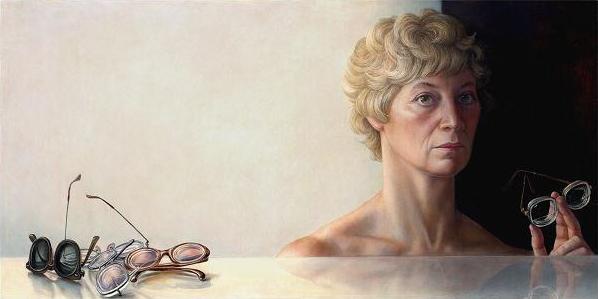
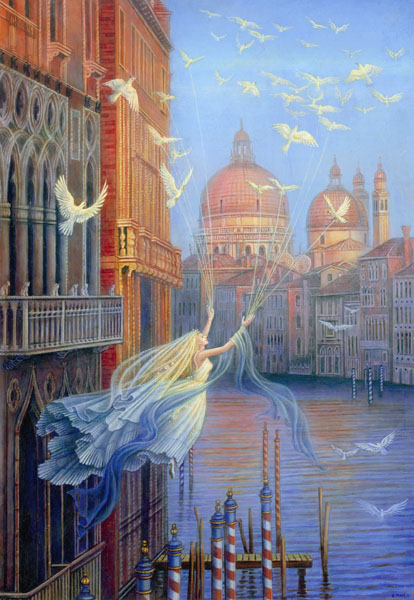
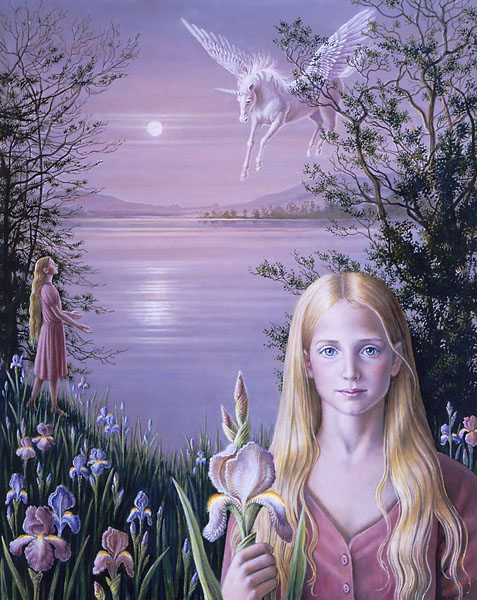
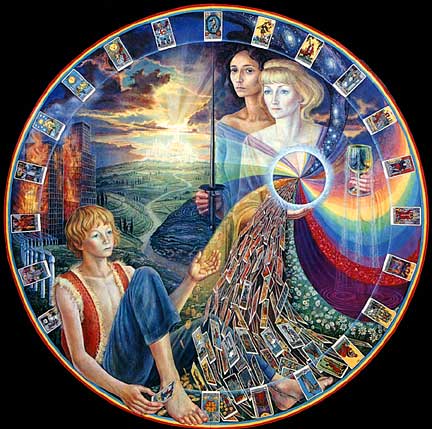

 - Reading with Natalie, book here...
- Reading with Natalie, book here...